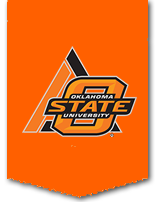Welcome to the Extension Program for Onsite Wastewater Treatment Systems
The soil is a key foundation and unparalleled recycler and purifier across a catena that includes forest, rangeland, agricultural, urban and suburban and wetland ecosystems. Soil processes in these ecosystems allow the soil to perform functions that may be related to production, ecological regulation, biological habitat and engineering.
The Ecological Regulator Function of the Soil
The soil is, by design or by accident, the ultimate recipient of anthropogenic wastes that may come from industrial, domestic and agricultural sources. To ensure proper soil treatment, it is vital that only the appropriate type and quantity of waste is applied to the correct type of soil. Soil chemical, physical and biological properties are the key determinants of the soil's ability and capacity to treat wastes.
What does the extension program deliver:
The Extension Program on Soils in Non-Agricultural Uses aims to:
- develop and administer programs that will equip environmental professionals with scientific background necessary to formulate sound decisions related to the use of the soil in household wastewater.
- develop and administer appropriate short-term courses that will meet continuing education requirements of health and environmental professionals involved in the treatment of wastewater
- produce extension bulletins, fact sheets, webminars, etc. that are related to a current environment-related soil science issue, an existing problem or a new regulation that affects the utilization of soils for non-agricultural uses in treating domestic wastewater.
Onsite Wastewater Treatment Systems (OWTS) or Septic Systems
Household and commercial sewage that cannot be routed to a centralized facility for treatment are processed using onsite septic systems. These include a wide range of individual and cluster treatment systems used in approximately 20 percent of all homes in the United States. An estimated 10 to 20 percent of these systems malfunction each year, causing pollution to the environment and creating a risk to public health (USEPA, 2008). One cause of malfunction is the inappropriate choice of installed system for the type of soil in an area (USEPA, 2013).
In the first half of the last decade, an average of 10,000 new treatment systems per year had been authorized in Oklahoma (Fig. 1). The percentage of malfunctioning units out of the existing onsite septic systems in the State is unknown. Oklahoma Department of Environmental Quality (DEQ)-reported complaints about onsite septic systems, however, range from roughly 600 to 1,100 annually over the last decade.
The decisions relating to the type of septic system permitted for installation in an area depend on one or both of the following information: 1) observed soil profile properties and 2) an estimate of the degree of water flow through the soil profile. Septic system installation in Oklahoma is regulated by DEQ and the type of septic system permitted is largely based on observed soil properties –mainly soil texture of the porous material as well as soil color and the presence of restricting layers.


